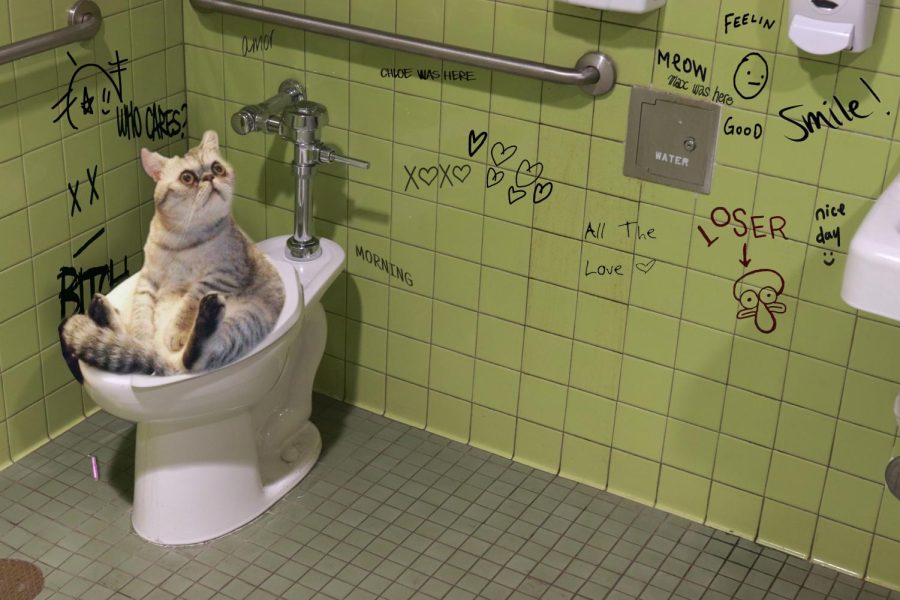Understanding the Dangers of Flushing Animal Waste Down the Toilet
Understanding the Dangers of Flushing Animal Waste Down the Toilet
Blog Article
How do you actually feel on the subject of 4 Reasons Why Dog Poop Cleanup is Important?

When it pertains to disposing of waste, especially animal waste, many individuals often resort to the practical alternative of flushing it down the commode. Nonetheless, this relatively simple remedy can have serious consequences for the setting and public health. In this write-up, we'll explore why flushing pet waste down the bathroom is a bad idea and give different approaches for appropriate disposal.
Intro
Correct waste disposal is essential for keeping environmental sustainability and public health. While it might appear harmless to flush animal waste down the toilet, it can result in various problems, both for the setting and human wellness.
Risks of flushing pet waste
Ecological effect
Flushing animal waste presents unsafe microorganisms and microorganisms right into waterways, which can negatively impact aquatic ecosystems. These virus can contaminate water sources and injury aquatic life, interfering with fragile communities.
Public health concerns
Animal waste contains unsafe bacteria such as E. coli and Salmonella, which can pose serious health and wellness dangers to humans. Purging pet waste down the bathroom can infect water supplies, causing the spread of diseases and infections.
Alternatives to flushing
Instead of purging animal waste down the commode, there are numerous alternative disposal approaches that are more environmentally friendly and hygienic.
Composting
Composting pet waste is an environment-friendly means to throw away it. By composting, raw material is broken down right into nutrient-rich dirt, which can be used to feed yards and plants.
Land fill disposal
Taking care of animal waste in a garbage dump is another choice. While not as eco-friendly as composting, it is a much safer option to flushing, as it prevents the contamination of water resources.
Animal garbage disposal systems
There are specific family pet waste disposal systems offered that securely and hygienically deal with pet waste. These systems commonly use enzymes to break down waste and eliminate odors.
Actions to proper pet waste disposal
To ensure appropriate disposal of animal waste, comply with these actions:
Scooping and landing waste
Frequently scoop and bag pet waste making use of eco-friendly bags. This protects against waste from polluting the environment.
Making use of designated waste bins
Dispose of bagged pet waste in assigned waste bins, such as garden compost containers or garbage dump containers. Stay clear of flushing it down the bathroom in any way expenses.
Cleansing litter boxes and family pet locations consistently
Routinely tidy litter boxes and pet locations to prevent the build-up of waste and bacteria. Usage pet-safe cleaning items to maintain hygiene.
Advantages of correct disposal approaches
Adopting proper disposal techniques for pet waste provides a number of advantages:
Lowered environmental pollution
Appropriate disposal methods reduce the risk of environmental pollution, safeguarding rivers and ecosystems from contamination
Decreased threat of water contamination.
By staying clear of flushing animal waste down the bathroom, the danger of water contamination is dramatically decreased, guarding public health.
Boosted sanitation and hygiene
Proper disposal methods promote better hygiene and health, creating a much safer environment for both people and pets.
Verdict
In conclusion, flushing pet waste down the commode is dangerous to the atmosphere and public health. By embracing alternate disposal methods and complying with proper waste administration practices, we can decrease the unfavorable effect of animal waste and contribute to a cleaner, healthier world.
What To Do With Dog Poo – The Do's And Don'ts Of Disposing Of Faeces
Dog poo bins
Some councils provide dedicated dog waste bins in popular dog-walking areas that can take dog poo that has been bagged but you can legally dispose of dog waste in any public litter bin, as long as it is securely bagged. This also applies to your wheelie bin at home.
Do not flush
Water companies do not recommend flushing dog faeces down the toilet because certain parasites can survive the water processing treatment and are potentially harmful to humans. You should also never consider flushing dog poo that has been bagged down the toilet as the bags will not break down and instead create severe blockages in the sewage system.
In the woods
The Forestry Commission promotes a ‘stick and flick’ method for dealing with waste in the woods. This means finding a stick and using it to flick any poo from off the path so that it is out of the way of other walkers. You could also bury it as long as it is not in an area where there might be livestock.
Livestock
Parasites found in dog poo can be transmitted to livestock if they inadvertently eat infected faeces that has been left on grazing land. This could result in the death of sheep or abortion in cattle so you should always make sure you pick up your dog’s waste in fields where livestock could be present.

As a keen reader on Why you should never flush dog poop down the toilet, I figured sharing that piece of content was a great idea. Please set aside a second to promote this entry if you enjoyed it. Thanks so much for your time spent reading it.
Schedule Appointment Report this page